When testing e-bikes from certain brands, I sometimes question whether their designers actually ride bikes. That’s not an issue with Ride1Up. It’s clear they understand bikes—from design to component selection, they just get it. The latest release, the Roadster V3, maintains the sleek, minimalist appearance I’ve come to expect from Ride1Up while surprisingly keeping the bike largely affordable at just $1,295.
The Roadster V3 is an evolution of the popular Roadster V2, now featuring upgraded specs and improved components, including a 10s Shimano Deore drivetrain with optional carbon belt drive single-speed setup, tubeless compatible Schwalbe G-One 700x45c gumwall tires, and Tektro hydraulic disc brakes.
As someone who genuinely appreciates what Ride1Up brings to the table, I was eager to get the Roadster V3 assembled and on the road. After logging plenty of miles, I’ll break down what Ride1Up nailed with this model and where there’s room for improvement.
My Experience Riding The Ride1Up Roadster V3 E-Bike
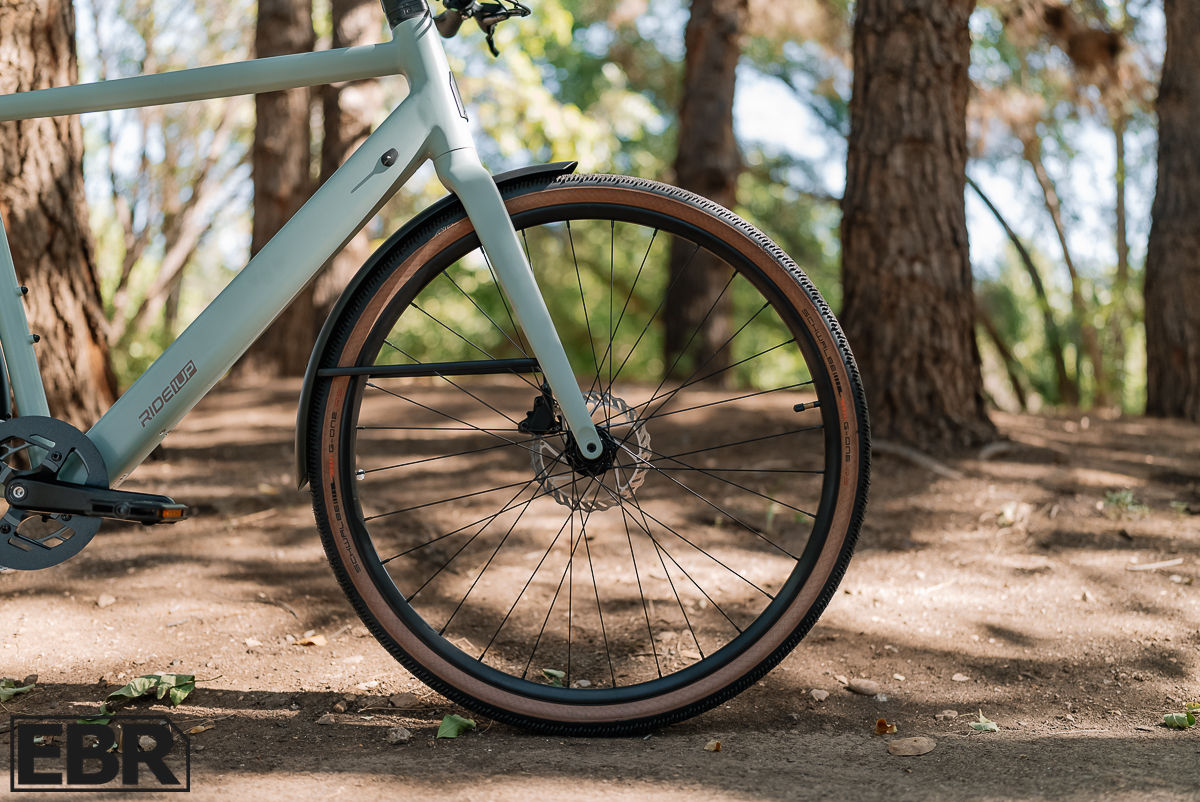
The riding position on the Roadster V3 is a hybrid position where you are leaning forward just a bit on the flat handlebar and comfy ergonomic rubber grips. You have a good view of the road in front of you but you’re not so bent over that your back is yelling at you.
The cockpit is clean, simple and has everything you would expect like brakes, shifters, a throttle, headlight and a display to manage the bike’s pedal assist. Cable management is handled via the stem where the wires and cables are neatly routed through the stem and internally routed to their final destinations.
The Roadster V3 has pedal assist up to 28 MPH and a throttle that is limited to 20 MPH. The 500W rear hub motor delivers a subtle yet confident level of pedal assist that feels intuitive to your pedaling cadence and effort, largely due to the new ‘Intui-Drive’ torque sensor where your effort as the rider dictates the level of power you feel in the assistance.
The Schwalbe G-One tires have a tread pattern with minimal resistance in the center but still having the knobby edges to maintain grip when cornering. While the frame is rigid, the increased threads of the Schwalbe tires over cheaper pure rubber compounds help ease up some road vibrations on your ride.
In general, these tires roll quietly, quickly, and with the gumwall sidewalls, they happen to look good too, and that’s half the battle these days. Plus, both the tires and wheels are able to be setup for tubeless with the caveat of the Schrader valve hole you will need to account for.
The Shimano Deore drivetrain was a welcomed addition of gearing range to the V3 over the more limited previous versions 64/20T single speed Toptrans belt drive. The Deore derailleur and shifters give a satisfying click with precise engagement at each speed.
All-in-all, the ride on the Roadster V3 is smooth, fast and all in a sleek package that comes in at a total of 44 lbs.
Range
Estimated Range (from Ride1Up): 20 – 40 miles
Real World Range Test Results : 49.9 miles (PAS 1)
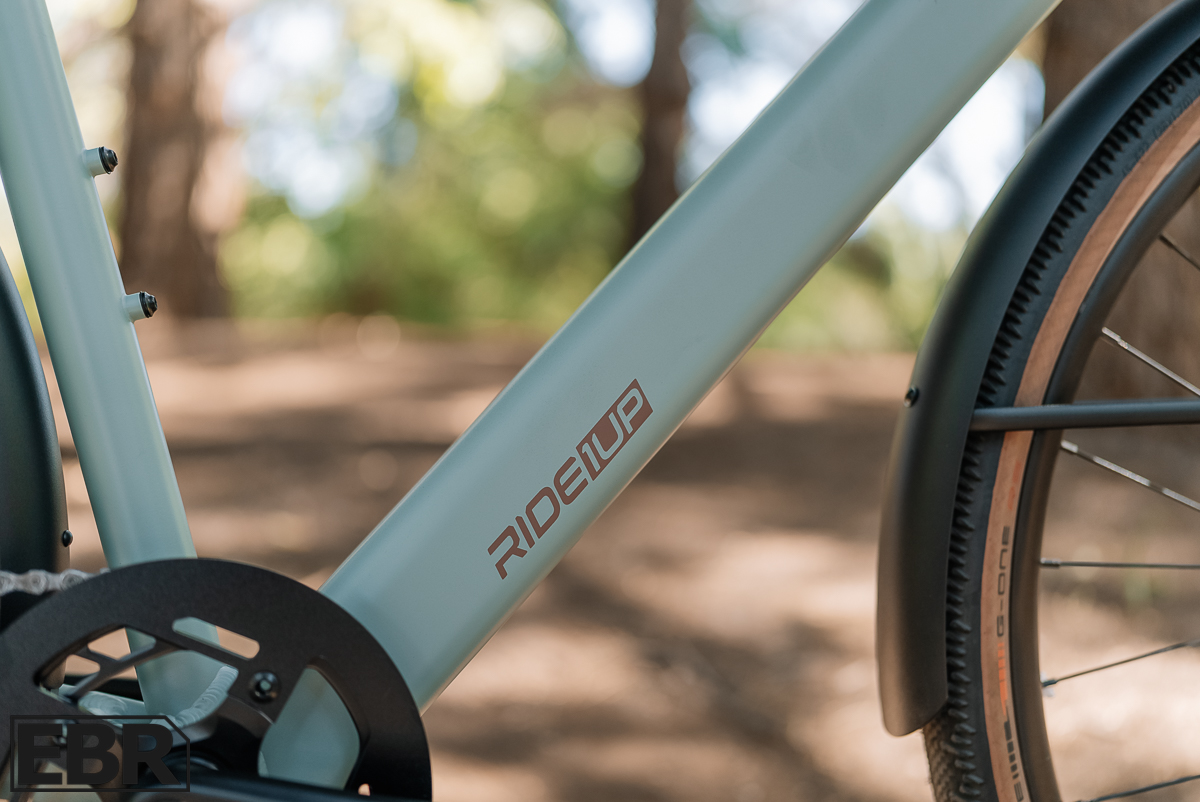
The Ride1Up Roadster V3 is powered by a 360Wh battery paired with a 500W rear hub motor, utilizing what Ride1Up calls their ‘Intui-Drive’ torque sensor. On paper, the company estimates a range of 20 to 40 miles depending on factors such as rider weight, speed, and riding style—fairly typical for an e-bike in this class. However, real-world conditions often tell a different story, so I was curious to see how this would translate on the road.
The Roadster V3 features four riding modes—Eco, Tour, Sport, and Boost—each progressively increasing power delivery at the cost of faster battery depletion. In Eco mode, you can comfortably cruise on lighter assist and stretch the battery life like I saw in the range test. Boost mode, on the other hand, provides maximum power for quicker acceleration and steep hills but will drain the battery more rapidly.
For the test, I rode primarily in Eco mode, maintaining an average speed of about 13 mph to maximize range while keeping things consistent yet realistic. To my surprise, I managed to get 49.9 miles on a single charge, surpassing Ride1Up’s upper range estimate. While this result is above the norm and may vary with different riders and conditions, it’s clear that the Roadster V3 delivers impressive efficiency.
One potential factor in this above-average range could be the ‘Intui-Drive’ torque sensor. While I can’t speak to the specific inner workings of the system, I can confidently say that the power delivery felt smooth and natural throughout my rides. This subtle yet effective boost is where a good torque sensor shines, providing just the right amount of assistance when needed without feeling overly mechanical or intrusive.
Power (Motor & Battery)
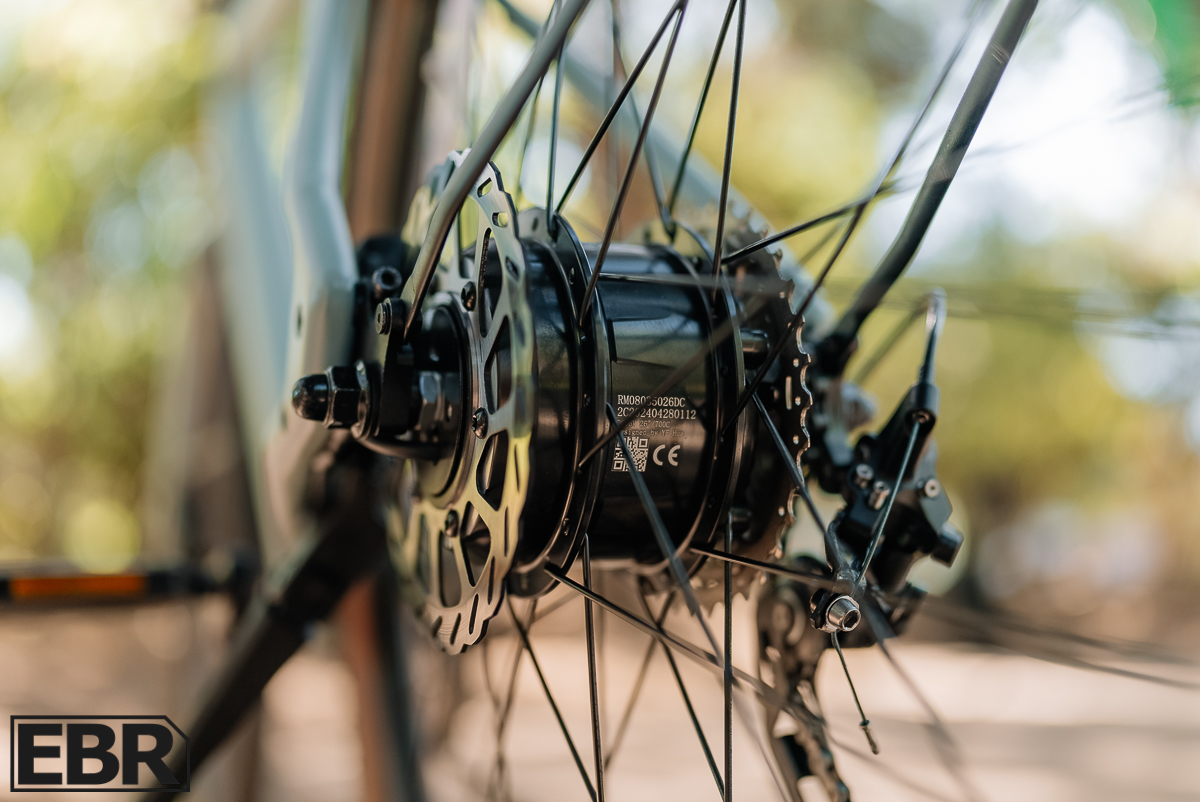
At 44 pounds, the 500W nominal rear hub motor, which, combined with the 36V 10Ah battery, strikes a balance between practicality and performance. With 50 Nm of torque on tap, it offers more than enough punch for daily commutes or quick trips around campus, especially given the bike’s relatively light weight.
The motor’s assist caps out at 20 mph when using only the throttle, which is sufficient for most rides where speed limits and traffic are factors. However, if you’re looking to push things a bit further, the pedal assist will carry you up to 28 mph with a little extra effort pedaling. This makes the Roadster V3 versatile, allowing you to quickly adjust your speed based on your route, whether you’re just cruising or pushing hard to cover ground.
What truly stands out in this setup is the ‘Intui-Drive’ torque sensor, which delivers a smooth and intuitive riding experience. It doesn’t feel like the motor is doing all the work for you—rather, it enhances your own effort, making it feel like you’ve leveled up in fitness. Whether you’re in Eco mode to conserve battery or switching to Boost for a quicker ride, the power delivery is responsive without feeling abrupt or unnatural.
The 360Wh battery, while not the largest in the e-bike market, pairs well with the bike’s efficient motor and lightweight design, offering a solid balance of range and power. For riders, this setup is more than capable of handling daily commutes, errands, and even longer weekend rides without range anxiety. Plus, with a water-resistant MIVICE controller, you’re not left worrying if you hit a puddle or get stuck in a monsoon on your way to work.
Components
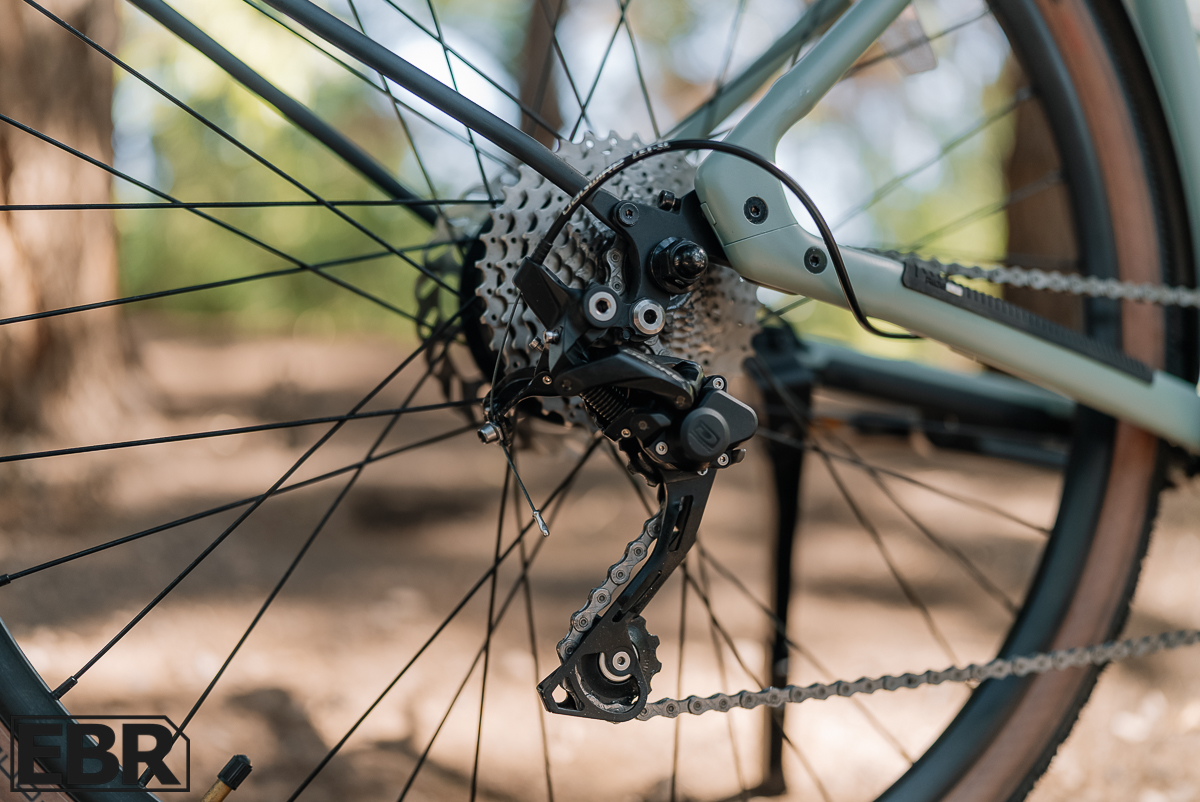
For an e-bike priced at just $1,295, the Ride1Up Roadster V3 offers impressive componentry that outpaces many of its competitors in this price range. Available in two drivetrain options—a 10-speed Shimano Deore setup or a single-speed carbon belt drive—each configuration caters to a different type of rider while maintaining the bike’s lightweight, no-nonsense commuter profile.
Drivetrain Options: 10-Speed or Single-Speed Dayco Belt Drive
The 10-speed version comes equipped with a Shimano Deore drivetrain, a surprising inclusion at this price point. Shimano Deore is well-regarded for its durability and performance, and the addition of a clutched derailleur helps eliminate chain slap, making for a quieter ride. The 42-tooth chainring paired with an 11-36t cassette offers a solid range of gearing, ideal for city commuting.
The gear ratios are well-suited for most environments, providing enough low-end for mild climbs and plenty of high-end for cruising on flats. The high-torque rated chain is a smart choice, as e-bikes tend to place more stress on drivetrains compared to standard bikes, and this setup should hold up well to daily use.
On the other hand, the single-speed version uses a Dayco Power carbon belt drive with a 64t chainring and 20t freewheel. Belt drives are inherently low-maintenance and provide a clean, quiet ride, making this option great for riders who prioritize simplicity and don’t want to fuss with gears or chain lube.
The belt drive is also a solid choice for those who live in flatter areas or who don’t mind putting in a little extra effort on inclines. While the single-speed version doesn’t offer the same range of versatility as the 10-speed, the lack of moving parts in the drivetrain means less upkeep and fewer potential issues, a win for daily commuters.
For the price, both options are excellent choices, and Ride1Up has done well to offer two distinct drivetrains that cater to different types of riders. Whether you opt for the 10-speed or the belt drive, you’re getting a well-thought-out e-bike with components that punch well above its price class.
Brakes
Both versions of the Roadster V3 come with Tektro hydraulic disc brakes featuring 160mm rotors. While not the largest rotors out there, they provide more than adequate stopping power for a lightweight, city-focused e-bike. The 2-piston calipers ensure reliable braking, even in wet conditions, and the hydraulic system offers a smooth and consistent feel at the lever.
The flat alloy handlebars at 680mm wide provide a stable and comfortable riding position, complemented by the 15° rise stem. The cockpit setup, while simple, is effective and offers good control for navigating tight urban streets or dodging traffic.
The inclusion of lock-on Ergo grips by Ergotech adds a nice touch of comfort, and the overall clean cable routing—most of which is internally routed—keeps the bike looking tidy and reduces the likelihood of snags.
Saddle and Rigid Frame
The Selle Vivo saddle provides a decent level of comfort, though it may feel a bit firm for longer rides. The 28.6mm alloy seatpost is a standard size, and while the bike doesn’t have any suspension, its rigid frame is consistent with the overall minimalist and lightweight design.
For a commuter bike, the lack of suspension is hardly a downside; it keeps the weight down and reduces complexity, which is exactly what you want in a reliable daily rider.
Screen / User Interface / App
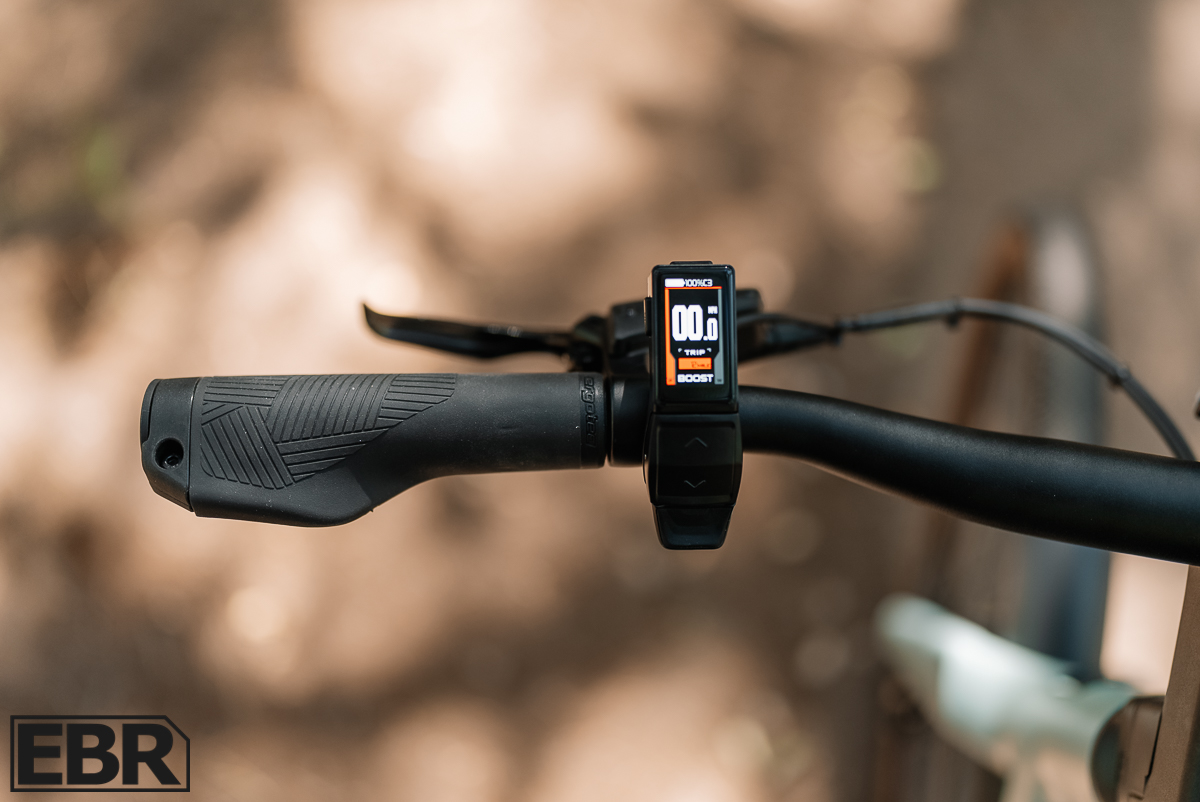
The Ride1Up Roadster V3 is equipped with the Velofox DM09 display, a compact 1.4-inch screen that, while small, packs all the essential data and more for your rides. Despite its modest size, the high-contrast LCD makes it easy to read even under direct sunlight. The screen provides real-time speed, pedal assist levels, trip distance, and odometer, all in a clean layout that doesn’t overwhelm the rider with unnecessary information.
Though minimalistic, the DM09 display offers more advanced features than you might expect at this price point. The pedal assist level can be quickly adjusted using the UP and DOWN buttons, giving riders control over how much motor power they want at any given time.
The DM09 display also has the ability to toggle between different speed and mileage modes, including real-time speed, average speed, maximum speed, trip distance, and odometer readings. A simple press of the M button allows you to cycle through these modes, giving you access to the data you need without complicated menus. After 5 seconds of inactivity, the display defaults back to the real-time speed, ensuring the most relevant information is always visible without extra button presses.
For night or low-light rides, the integrated lights can be activated by holding the UP button for 2 seconds. Additionally, there’s a walking assist mode, allowing the bike to be pushed at 4 mph with a simple press of the DOWN button.
While the display is user-friendly, it also allows for more in-depth tweaking via the settings menu. By holding the M button, riders can dive into customizable parameters to fine-tune their ride experience, from setting the top assist speed to adjusting more nuanced elements of the bike’s power delivery.
The small footprint of the DM09 fits perfectly with the Roadster V3’s overall minimalist design, keeping the cockpit clean and uncluttered. Despite its size, it doesn’t skimp on functionality or readability, making it a solid companion for both casual rides and daily commutes. The safety features are thoughtfully incorporated as well, with automatic power-down after 10 minutes of inactivity and guidance on turning the system on and off safely to avoid accidental throttle engagement.
Ride1Up Roadster V3 Model Options
The Ride1Up Roadster V3 comes in two distinct frame styles: the ST (Step-Through) and HS (High-Step). The ST model is designed as a one-size-fits-all frame, accommodating riders from 5’1” to 5’10”.
The HS version, on the other hand, comes in two frame sizes: Small, which fits riders from 5’3” to 5’8”, and Large, designed for those between 5’8” and 6’3”. At 5’11”, I opted for the Large HS frame and found it to be a great fit with no sizing concerns—comfortable and well-proportioned for daily commuting.
As for curb appeal, the Roadster V3 is available in two colorways: Mint Green, which I was sent for this review, and Black Onyx. Both options have a matte finish, lending the bike a sleek, understated look. Whether you prefer a pop of color or a more traditional black, both finishes complement the minimalist design of the bike.
Each frame, regardless of style or size, supports a max payload of 300 lbs, making it a solid option for carrying extra gear or heavier riders.
The final choice in customizing your Roadster V3 is the drivetrain, which we covered in detail in the components section. Whether you opt for the Shimano Deore 10-speed or the single-speed carbon belt drive, both configurations are available across all frame options.
Ride1Up also offers a range of accessories, including pannier bags, the Connect+ Rear Rack, and a phone holder, all designed to target the practicality of your Roadster V3 for commuting or running errands.
Is The Ride1Up Roadster V3 Worth Buying?
The Ride1Up Roadster lineup has been a fan favorite for years, and it’s easy to see why. With its lightweight, sleek, and minimalistic design, the Roadster V3 builds on that foundation with a noticeable bump in specs that make it the most capable and refined version yet. Its combination of a clean look, responsive torque-sensing motor, and approachable price point make it an attractive choice for riders seeking a practical e-bike for commuting or casual rides.
That said, there are a couple of areas where the Roadster V3 could improve. More mounting points for accessories or gear would be a welcome addition, especially for those who need extra carrying capacity. Additionally, the battery removal process could be a bit more user-friendly—the release tab is not as intuitive as you might expect, and there’s potential to knick the paint if you’re not careful during the process.
However, these are minor drawbacks when considering the bigger picture. The Roadster V3 delivers practicality, impressive range, and class 3 speeds, all powered by a 500W motor with 50Nm of torque. And it does so in a compact 44-pound package that caters to nearly any rider, whether you’re commuting daily or enjoying weekend rides. It’s a well-rounded e-bike that continues to uphold its reputation as a solid, fan-favorite commuter.

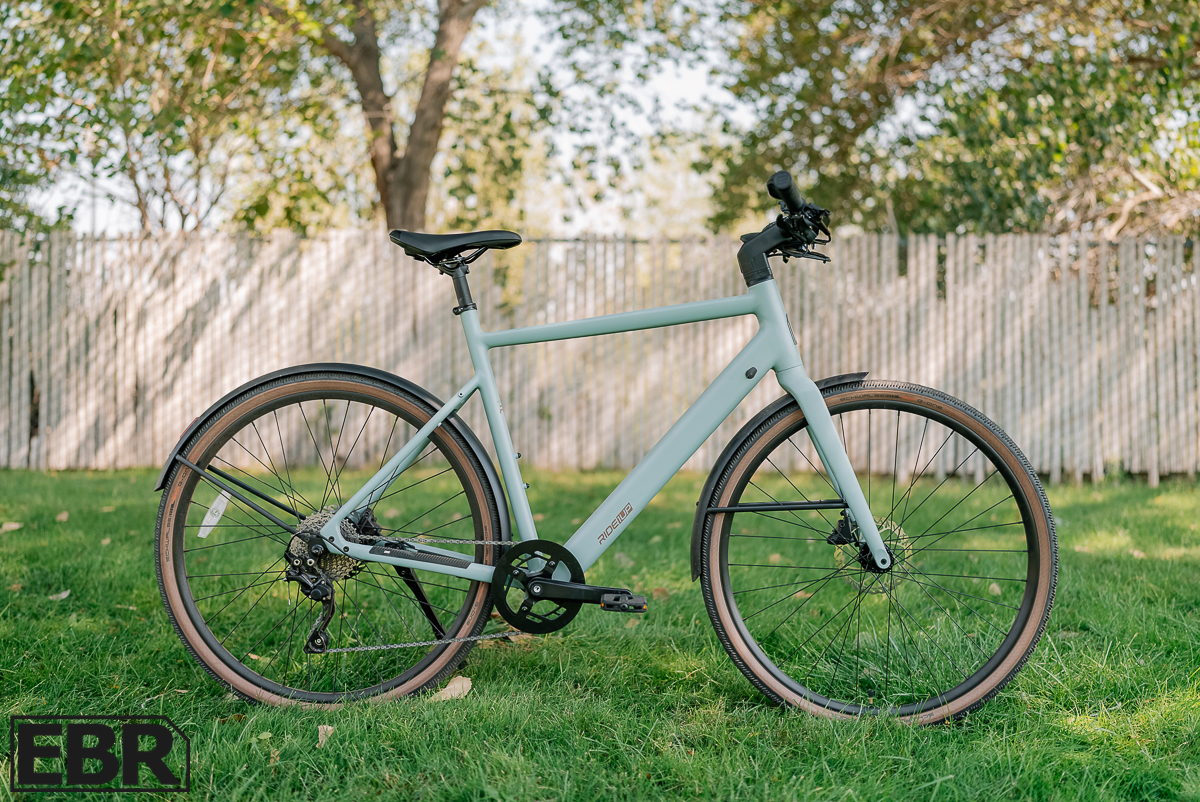
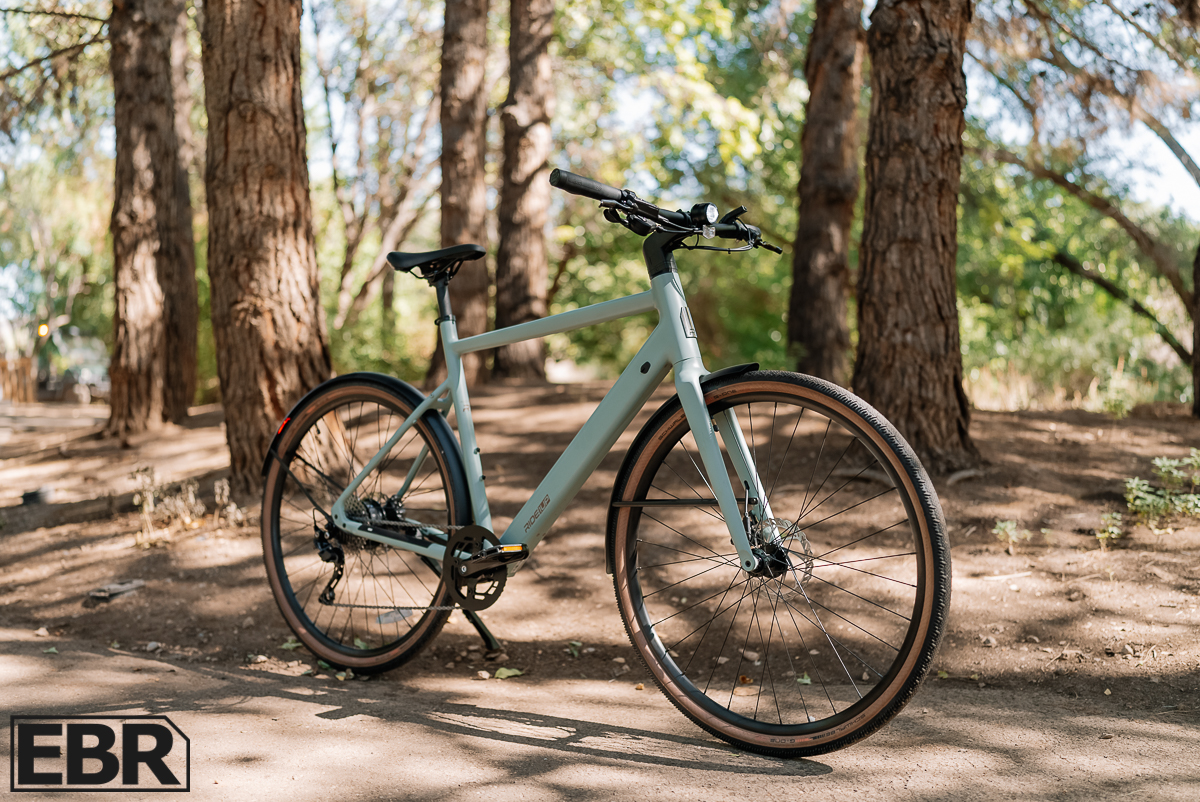
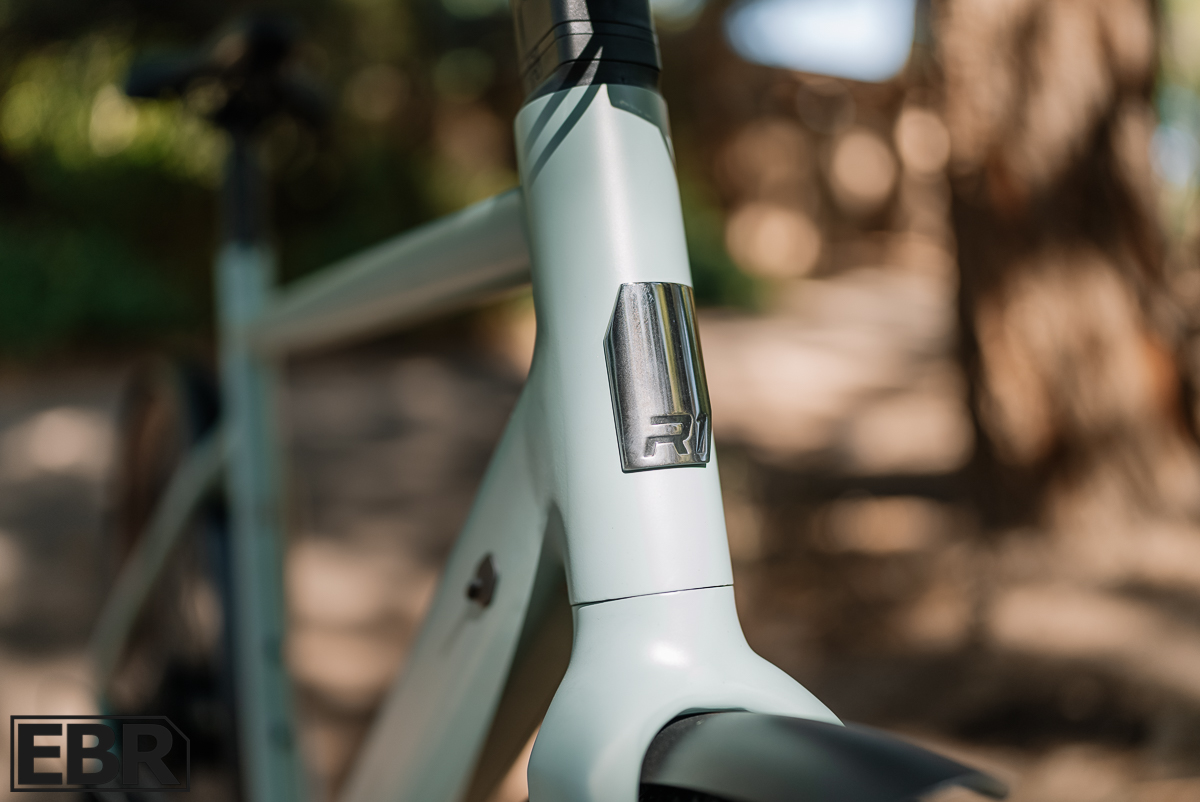
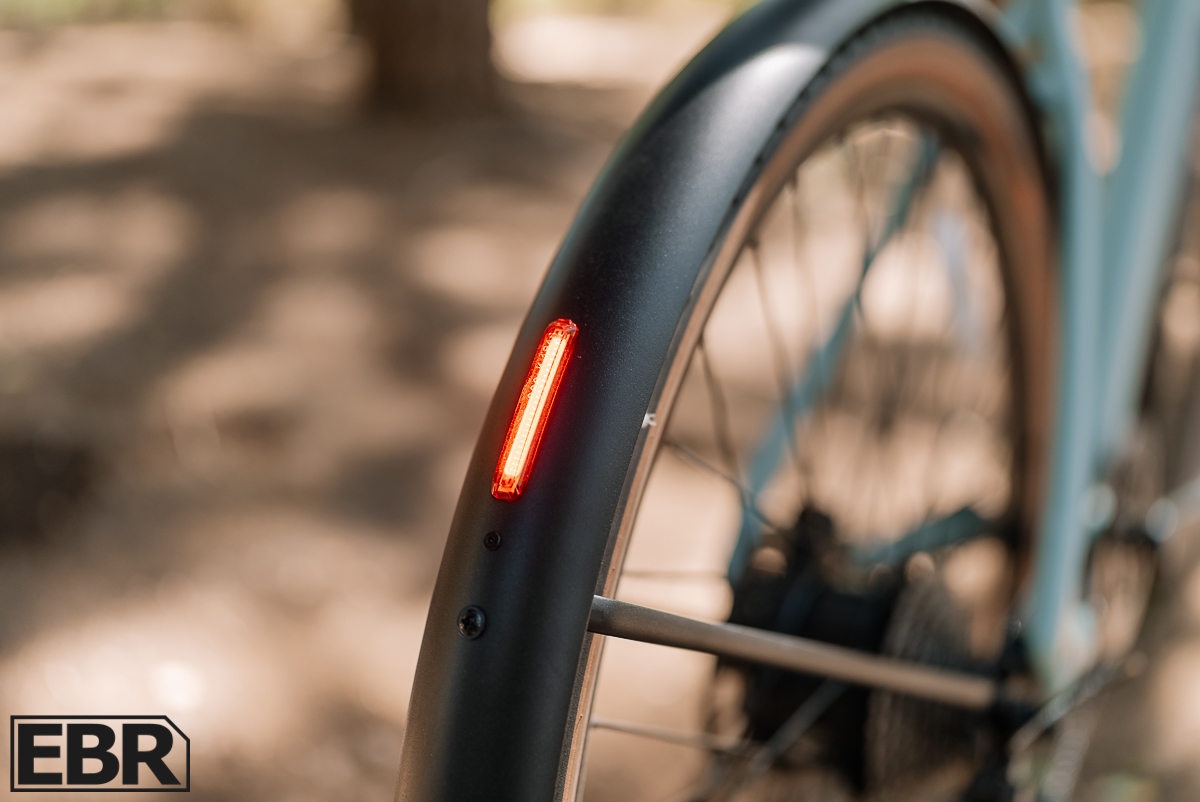
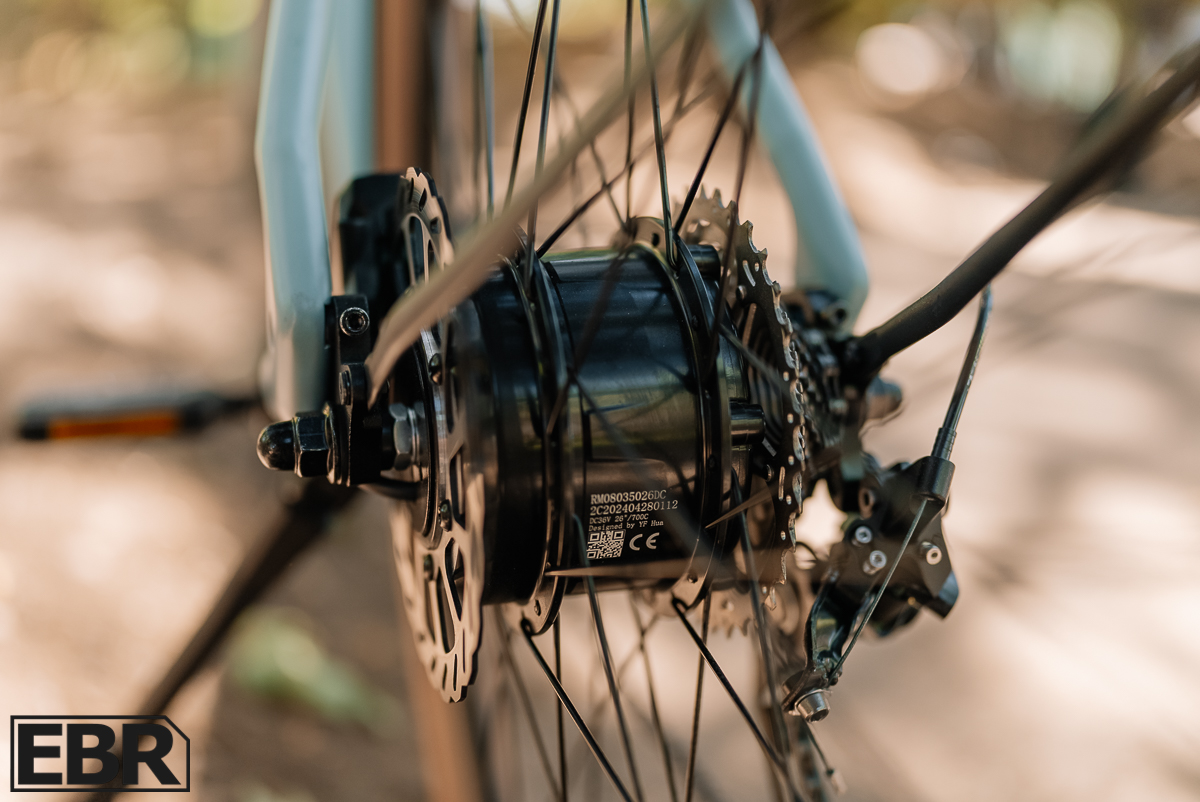
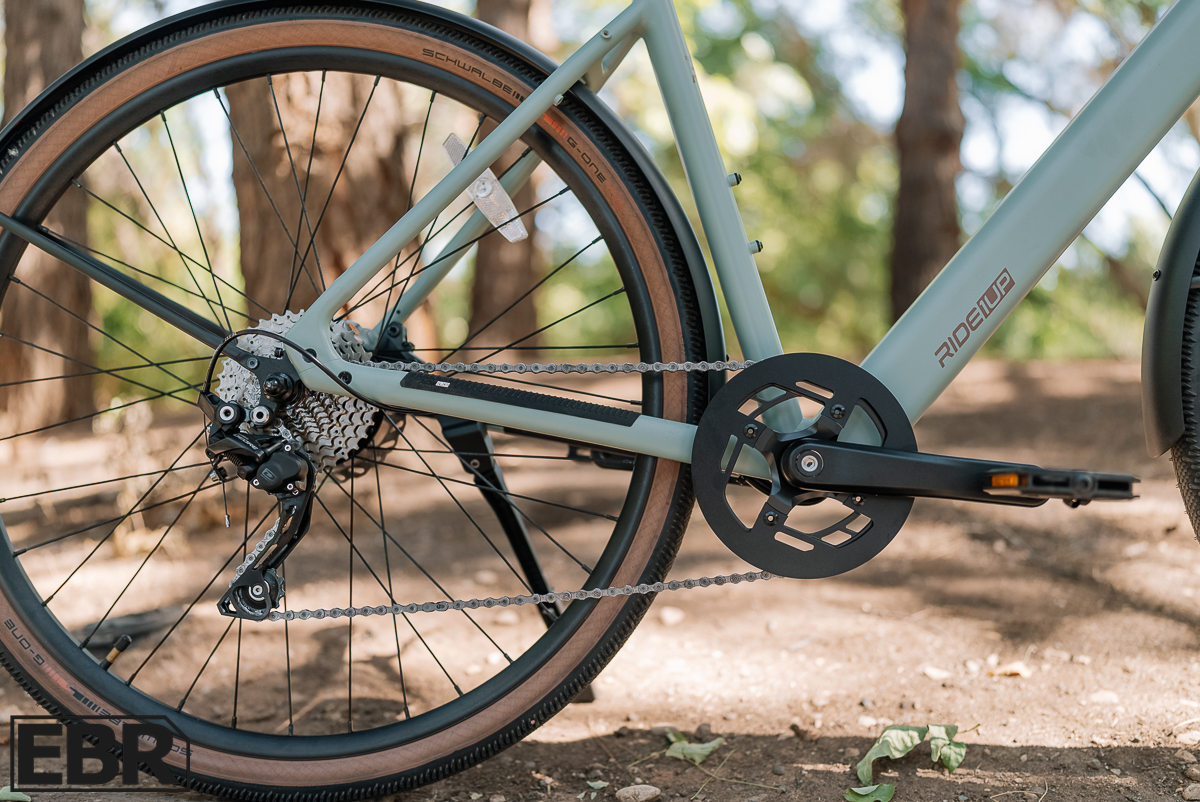
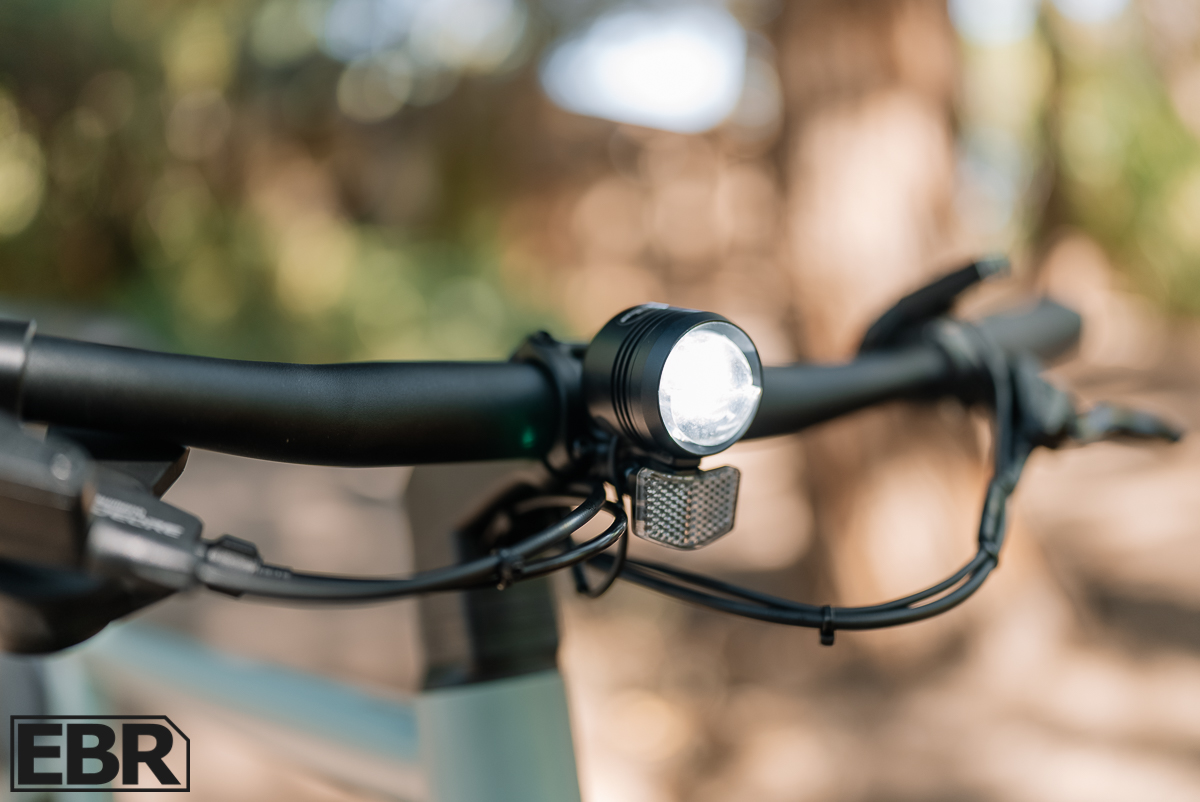
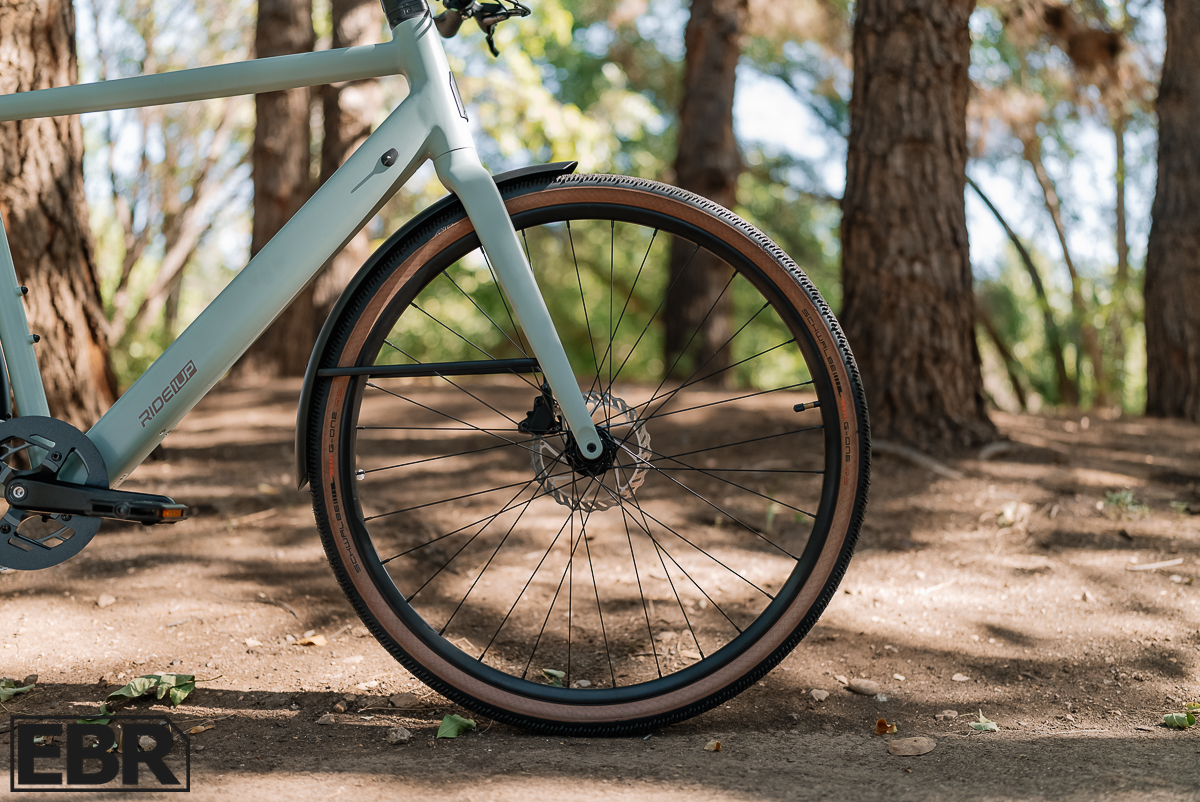
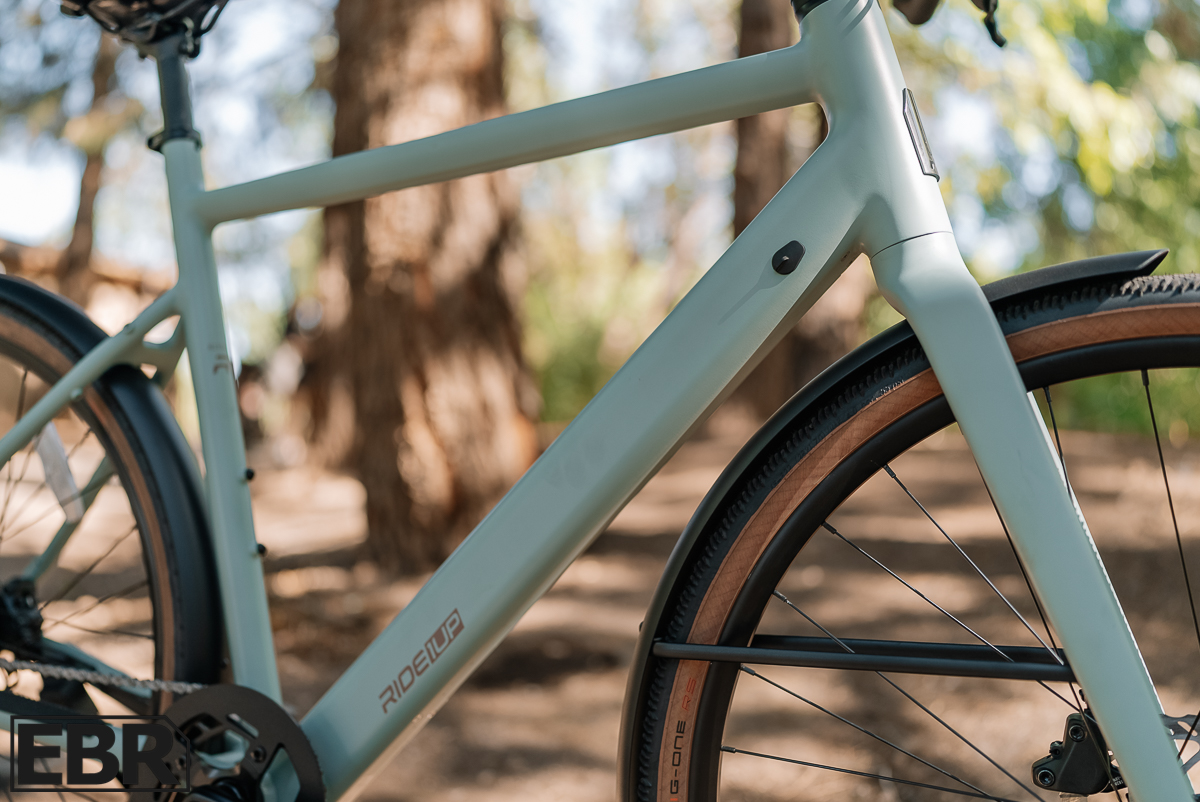
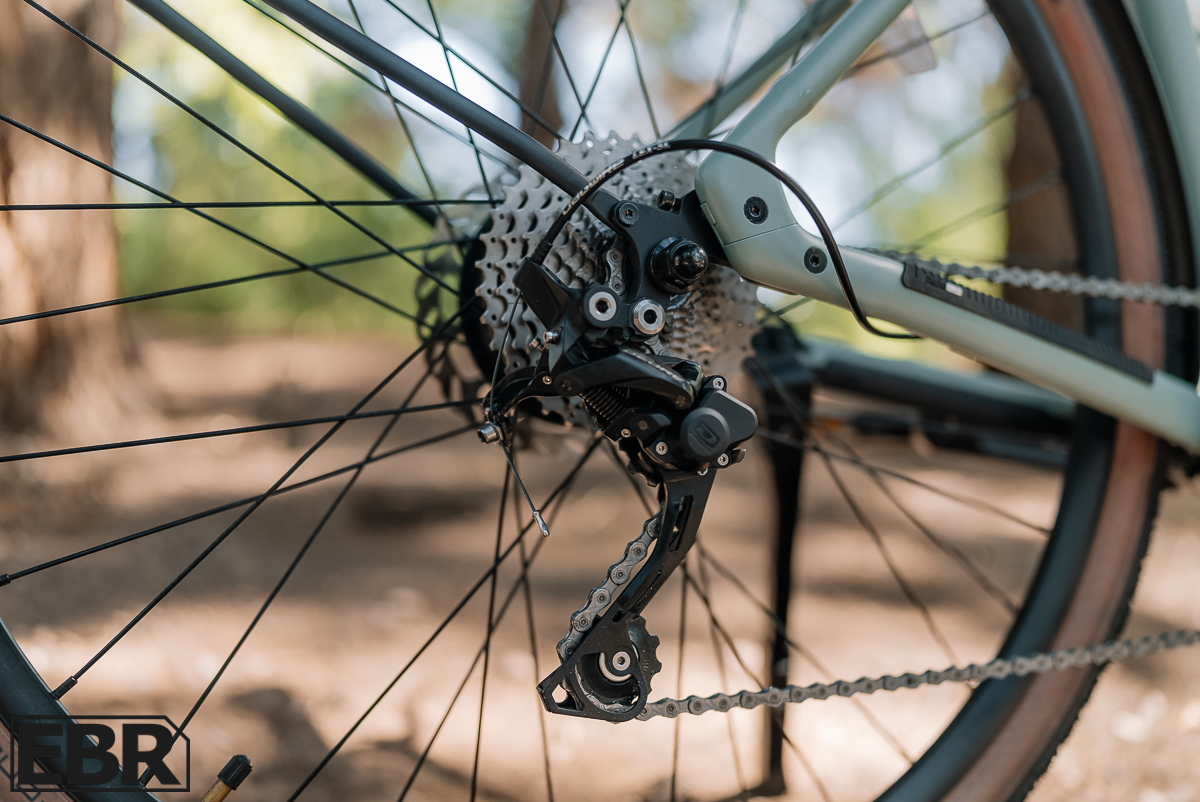
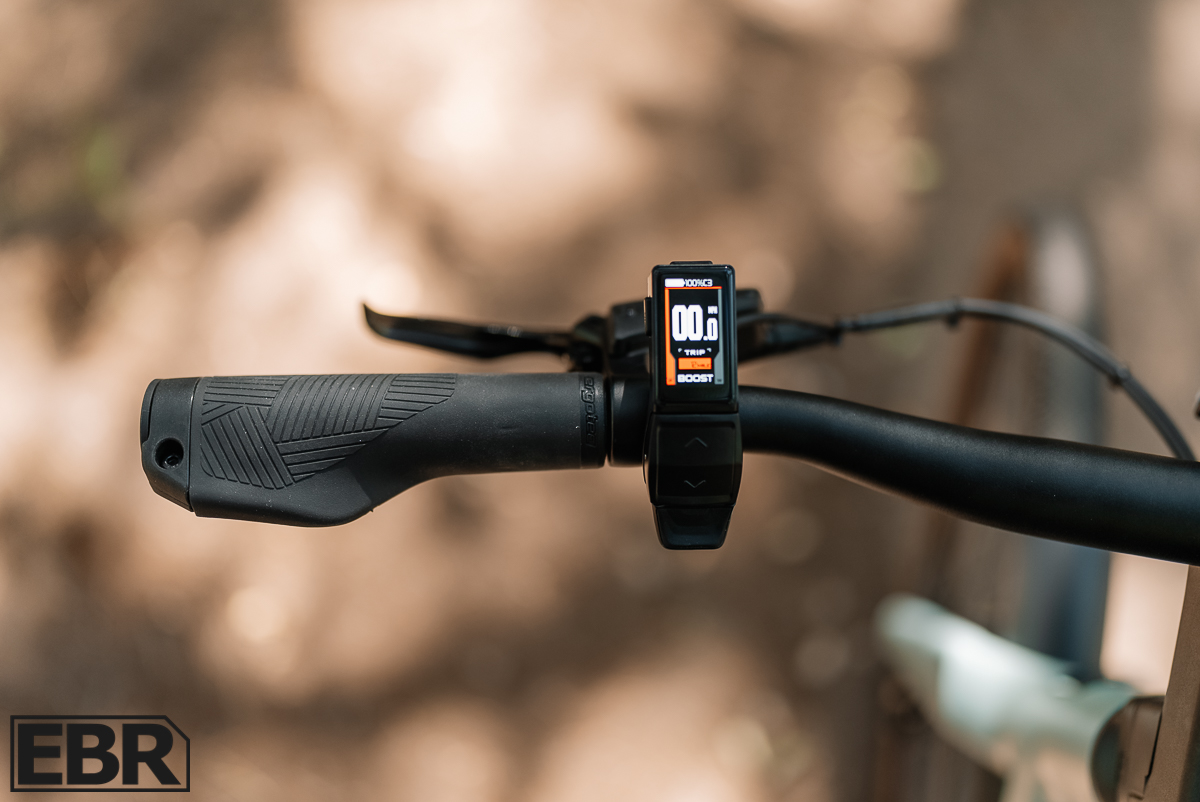

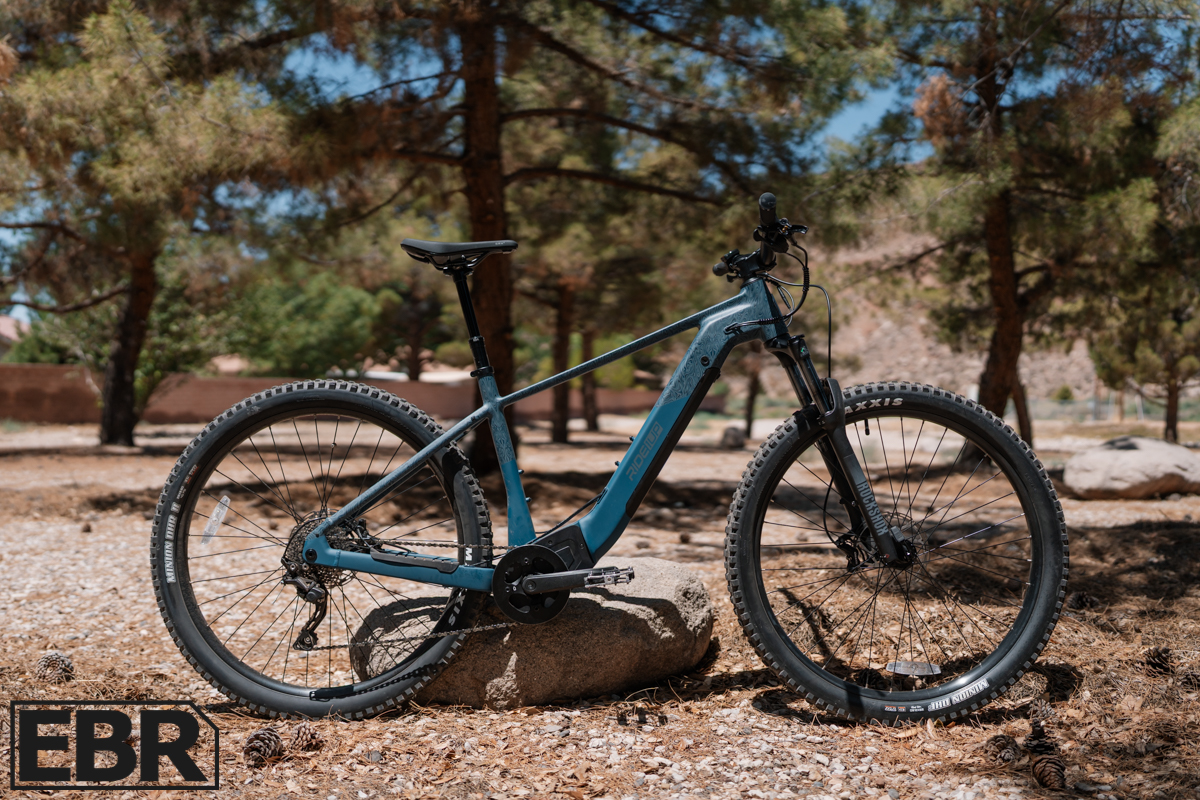
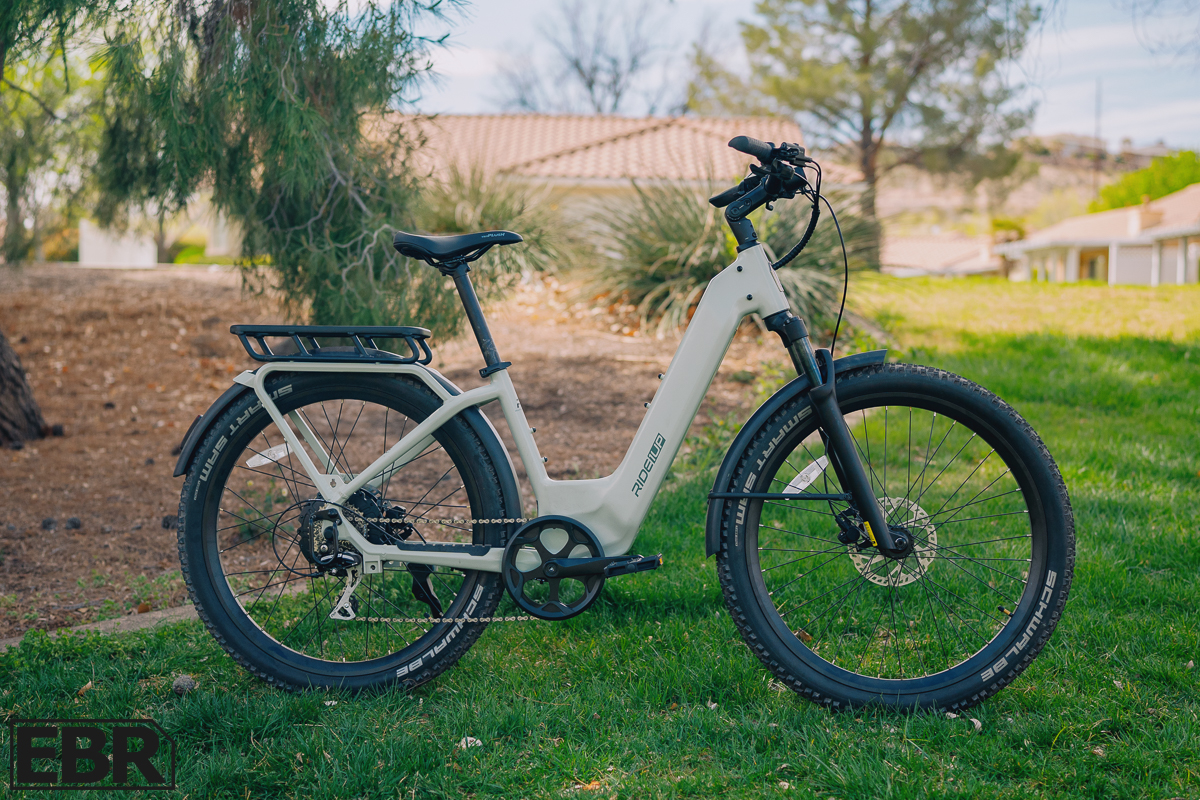

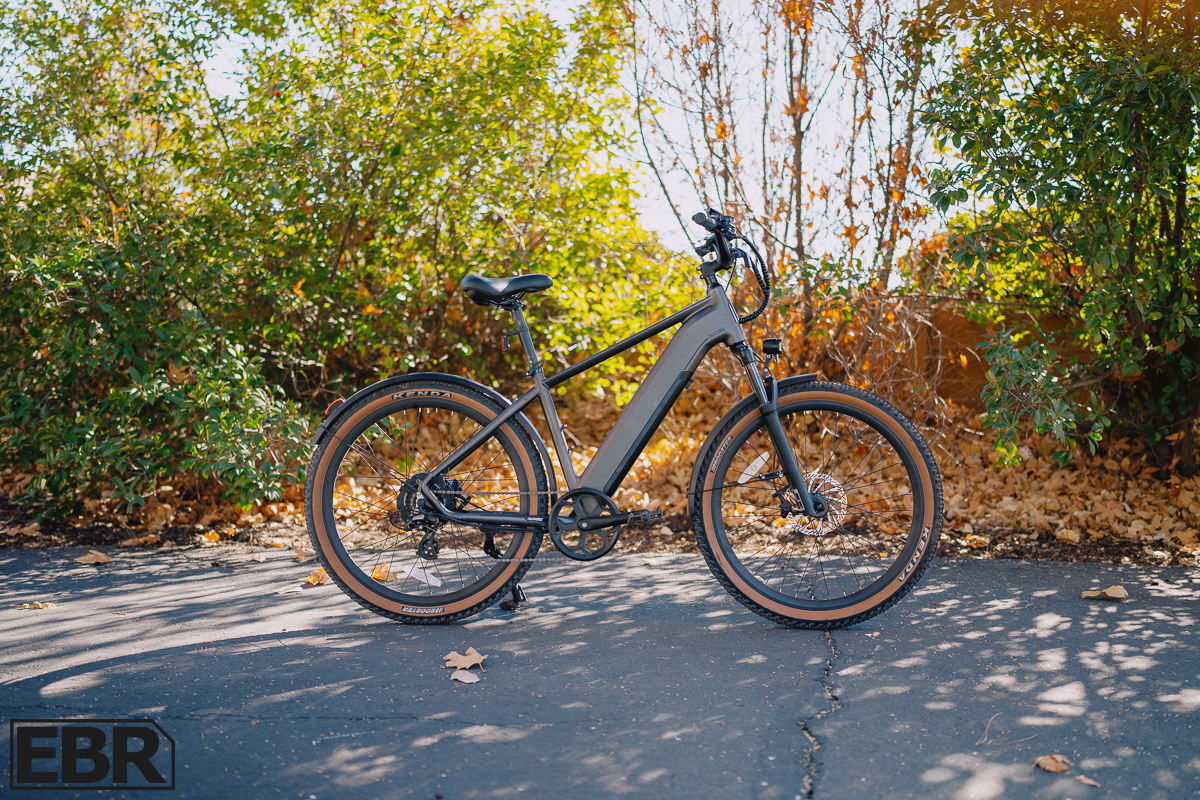
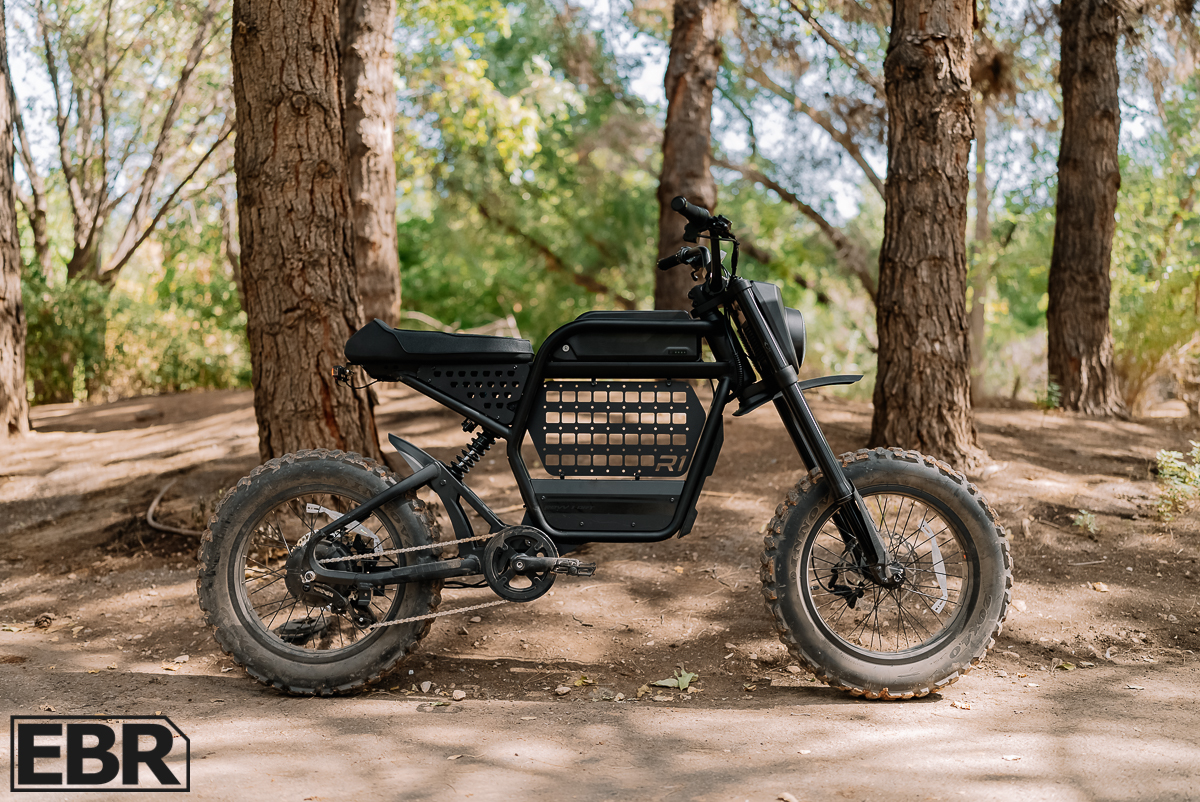
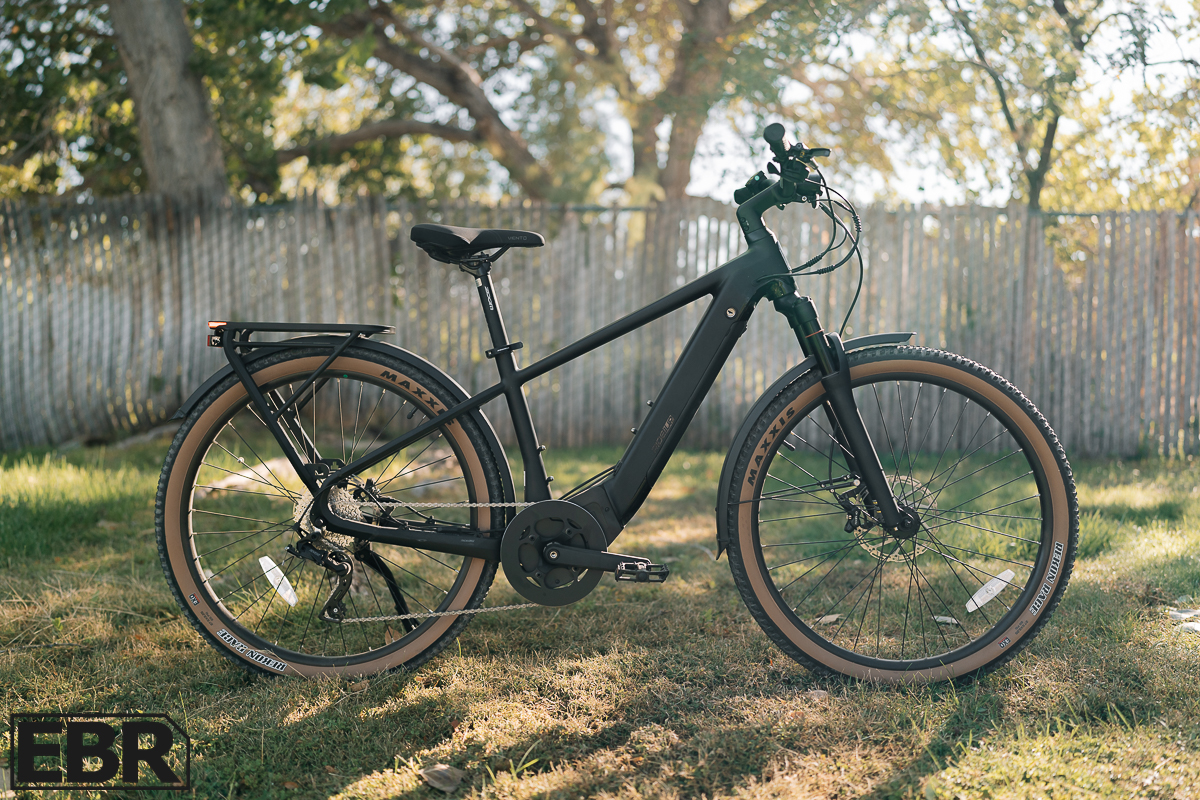
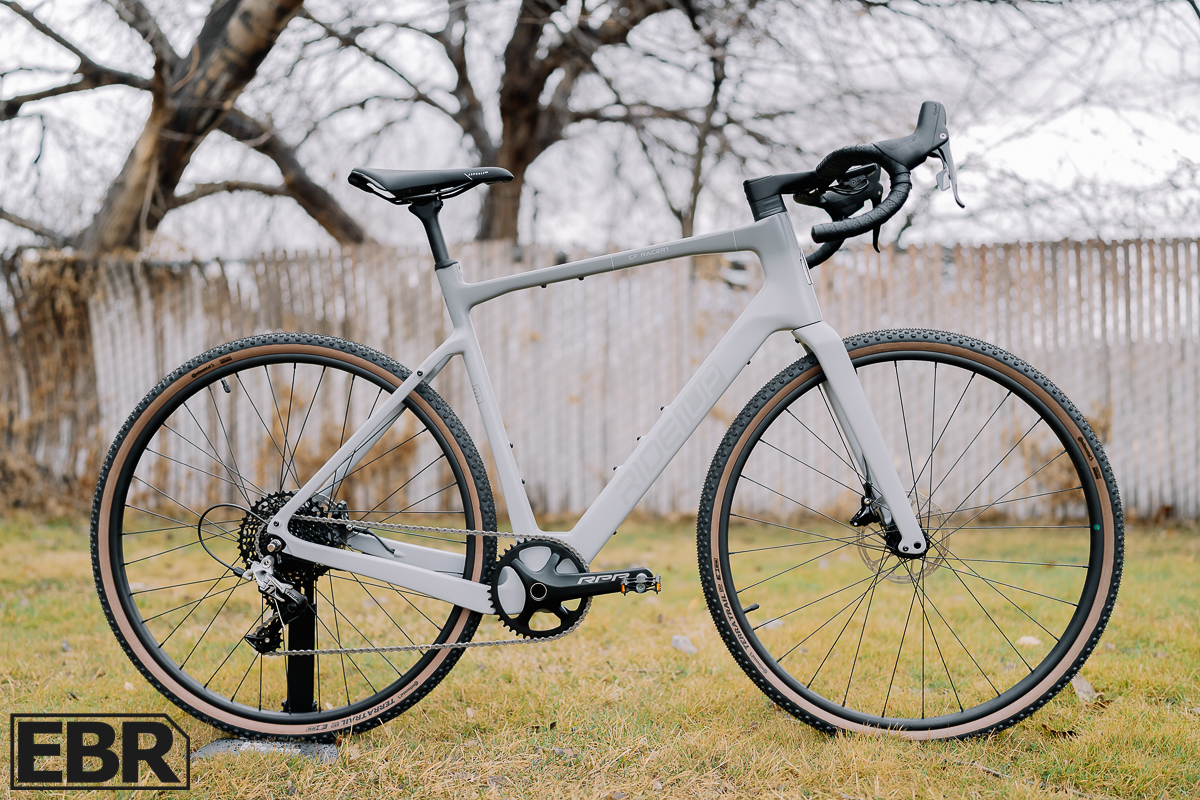
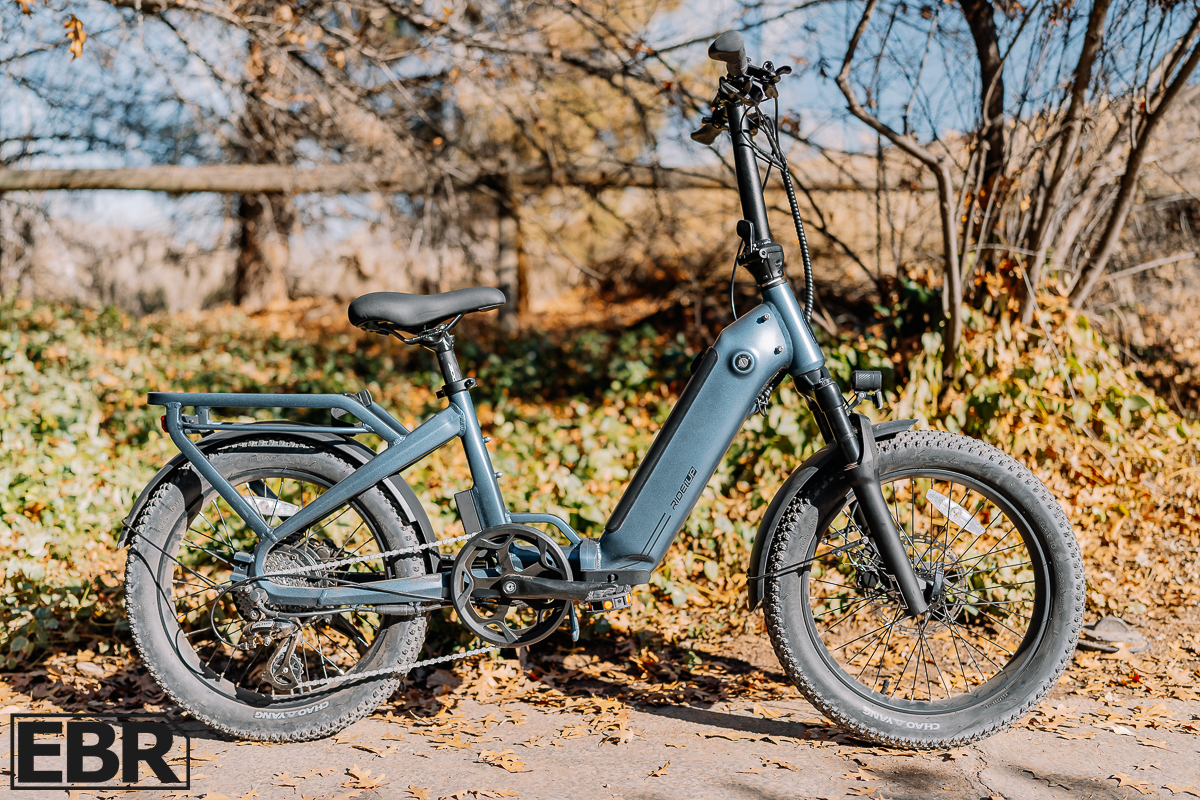
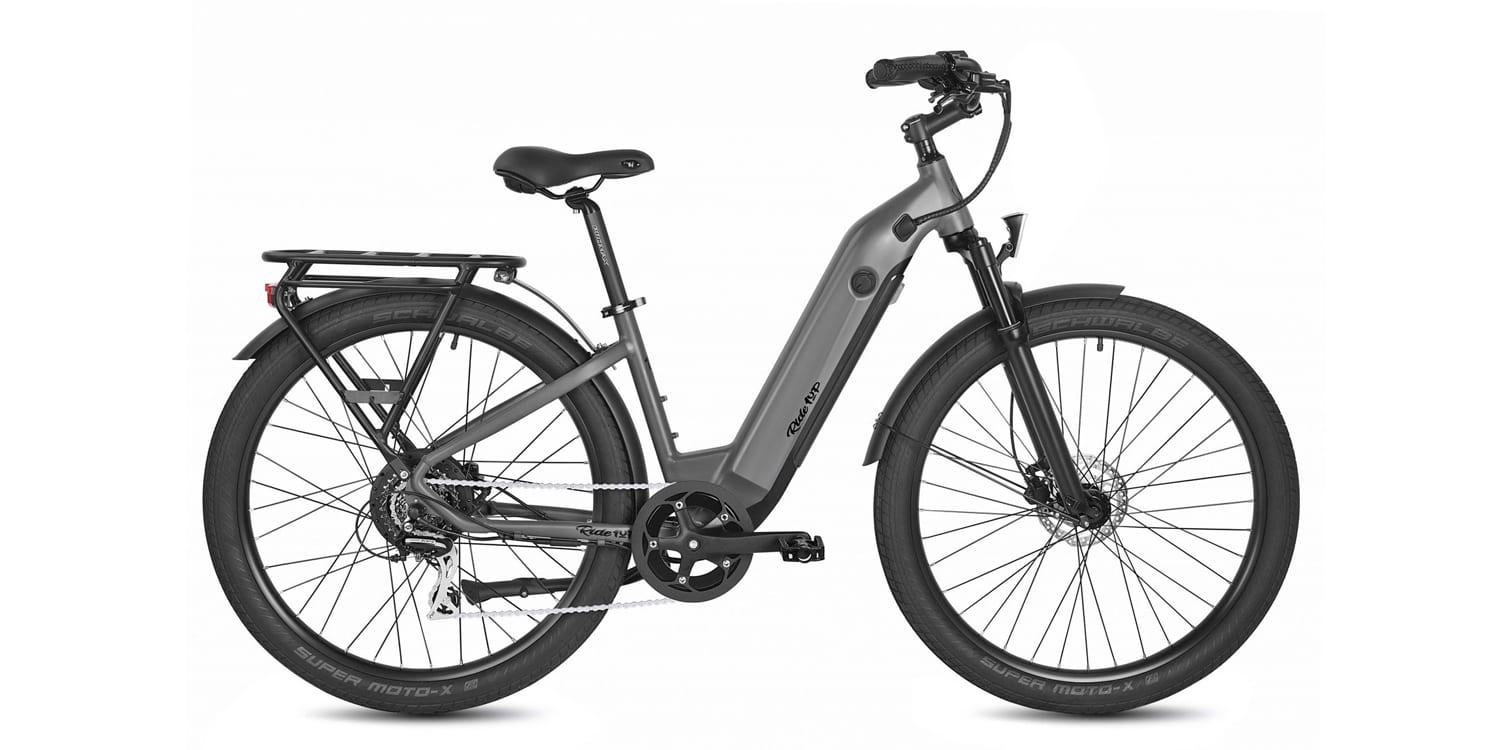
Reader Interactions